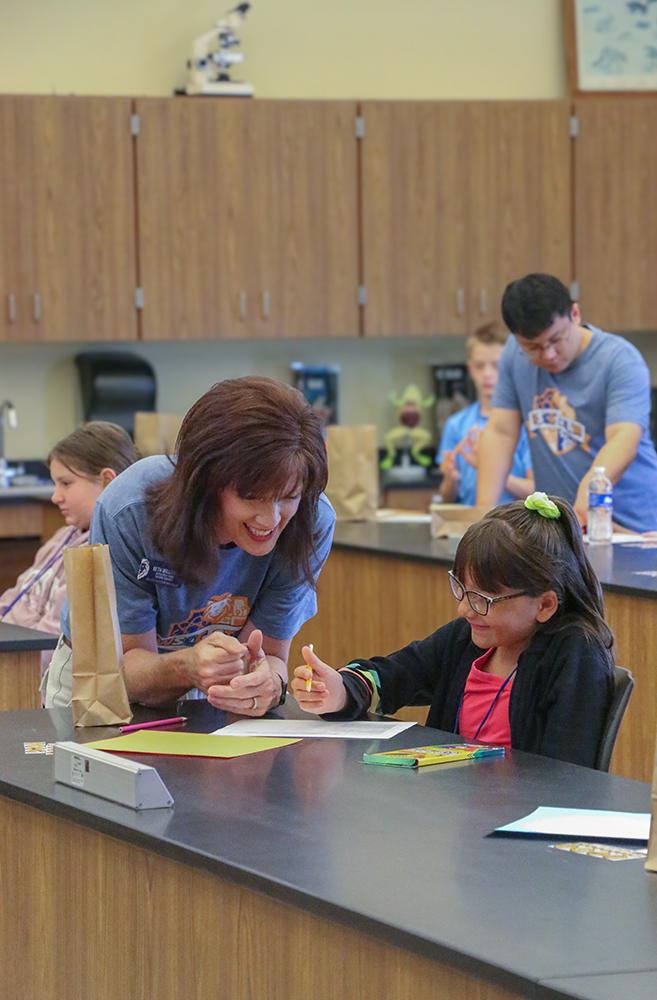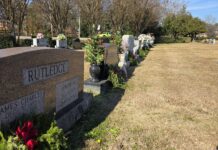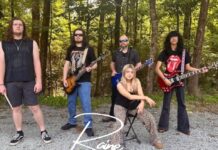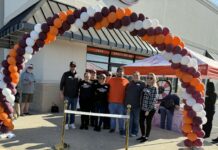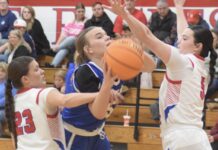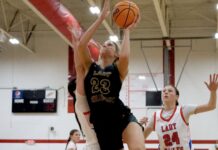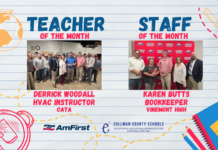HANCEVILLE, Ala. – Wallace State Community College recently hosted a STEAM (Science, Technology, Engineering, Art and Mathematics) Camp for area elementary school students at the School of Nursing and Center for Science.
More than 55 students descended on Wallace State’s campus for the weeklong camp, where faculty and staff led lessons and held activities demonstrating concepts such as kinetic energy, mathematical probability, chemical reactions and plant propagation.
The camp makes difficult concepts easy and fun, with lessons designed to simplify scientific principles through hands-on education. This approach makes learning relevant and interesting, fostering a deeper interest in STEAM subjects for students in third through fifth grade.
North Central Alabama STEM Ecosystem Coordinator Aubry Lovell said STEAM Camp is a great opportunity for students to have fun over the summer, while also learning valuable scientific principles and skills.
“This week’s STEAM Camp has been a great opportunity for students to engage in hands-on learning experiences across the fields of Science, Technology, Engineering, Arts and Mathematics. Students were able to cultivate critical thinking, creativity and problem-solving skills. The camp not only enhances academic knowledge but also helps students grow their innovation and exploration skills, which are essential for their future success. Wallace State Community College and the North Central Alabama STEM Ecosystem value camps like these because they play a vital role in preparing the next generation for the challenges and opportunities of a rapidly evolving world,” said Lovell.
Computer Science Instructor Jeremy Wilt said the STEAM title is all-encompassing, making note of the inclusion of art to the standard STEM designation.
“We are in the age of technology, so art is a part of science, just as it is a part of creativity. It is just like how an engineer is an artist, because they are designing and seeing a project through to the end,” said Wilt. “When you think about the scientific method or computational thinking, there are steps that are involved to create things through a design process. You take science and then you add engineering, which allows for some of the design behind the scenes. You mix that with art, which makes it look pretty. Math is everywhere, so it doesn’t matter what job you’ve got, you are going to have math involved. Finally, technology acts as a tool to tie it all together.”
Biology Instructor Cassidy Wright said events like STEAM Camp play an important role in getting kids interested in education from an early age.
“STEAM Camp is an incredibly important event here at Wallace State as it fosters curiosity and a love for learning among young students. By introducing children to STEAM disciplines at an early age, we hope to build a strong foundation that will support their future academic and career endeavors,” said Wright. “This camp also serves as an early connection to Wallace State, allowing students to familiarize themselves with the college environment and resources, potentially inspiring them to pursue further education here in the future. Anyone that was a part of this event can confidently say it was an honor educating the bright minds of children from our local communities this week.”
Each day of STEAM Camp brought two different activities for students to participate in, showcasing a variety of different scientific topics.
On Monday, Computer Science Department Chair Terry Ayers held a lab showcasing kinetic energy, where students got the chance to build catapults and put them to the test by launching balls. At the end of the activity, students got to take their creations home with them.
Wilt held an activity on chemical reactions, where students got to learn what happens on a molecular level when they combine baking soda and vinegar. Students then got to imagine and sketch out a vehicle, ranging from car, truck and submarine, to see how chemical reactions can propel the vehicle. Once students finished drawing their designs, Wilt put each one into the Microsoft Copilot software, showing how their vehicles would function.
On Tuesday, students got creative with Graphic Art and Design Program Director Adrian Scott by painting with watercolors, starting with an imagined idea and following a series of artistic steps to create a final product.
Wright led “Critter Crew,” where students got the chance to learn about different types of animals and have their photos made with snakes, birds, a bearded dragon, guinea pig and an axolotl.
On Wednesday, Agribusiness/Horticulture Program Director Jason Bynum and students in the program taught camp attendees about the different types of plants. Students learned how to propagate plants and got to sow their own plant cuttings to take home.
Advanced Automotive Technology Instructor Adam Frazar explained the science behind electric engines and the future of automotive vehicles. Students got the chance to race each other with remote controlled cars around a track.
On Thursday, Engineering Technology Department Chair Todd Hardman showed students how to design small rockets and taught the principles of force and drag. Students used drinking straws as the main body of their rockets, construction paper for tail fins and modeling clay for nose cones. They experimented with modifying these components to enhance rocket performance, launching them to determine whose rocket design traveled the farthest.
Natural Sciences Department Chair Beth Williams, Biology Instructor Dingguo Zhang and Secretary of Natural Sciences Brenda McHan used candy to demonstrate genetics. The students selected candy pieces that represented different gene variants, and using a graph similar to a Punnett Square, they determined the traits they inherited based on their candy choices before illustrating the phenotypes on a face outline.
On Friday, Mathematics Department Chair Brandon Smith and Mathematics Instructors Karen Davis, Jennifer Stanley and Angela Doss led the “Deal or No Deal” activity. Modeled after the famous game show, this version allowed students to explore the concepts of chance and mathematical probability.
Ayers and Wilt led an underwater robotics activity. Using two pools set up on the green space outside of the School of Nursing and Center for Science, students got to piece together and pilot underwater remote-controlled robots.
A graduation ceremony was held on the final day of camp and Lovell presented each student with a certificate and a gift bag full of Wallace State gear, celebrating their accomplishments throughout the week.
Wallace State Community College will welcome a full class of sixth through eighth grade students to its middle school STEAM Camp on July 22-26.
For more information about STEAM Camp and the North Central Alabama STEM Ecosystem, email Aubry Lovell at aubry.lovell@wallacestate.edu, call 256-352-8105 or visit the North Central Alabama STEM Ecosystem Facebook page.

